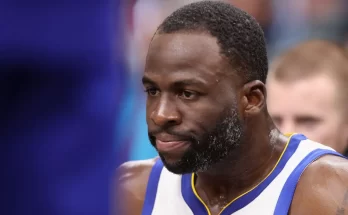The decision of a college athlete to transfer from one program to another is never simple, often involving a multitude of factors ranging from playing time, personal development, academic goals, and sometimes, more intangible elements like team culture and coaching relationships. In the case of Jeheim Oatis, a former defensive lineman for the University of Alabama Crimson Tide, the choice to leave one of college football’s most storied programs has drawn considerable attention—especially since he has openly attributed his departure to issues involving the Crimson Tide’s coaching staff.
Jeheim Oatis was once regarded as one of the most promising defensive line prospects in his recruiting class. Coming out of high school with a reputation for elite athleticism, strength, and technique, he was quickly embraced by Alabama’s coaching staff and fans as a player who could potentially make a significant impact on the team’s defense. Alabama’s defensive line, known for producing NFL-caliber talent, seemed like the perfect environment for Oatis to hone his skills, develop as a player, and ultimately showcase his abilities on a national stage.
However, despite the initial optimism surrounding his college career, Oatis’s experience at Alabama did not unfold as anticipated. In his public statements following the announcement of his transfer, Oatis has been candid in expressing that his decision stemmed largely from his dissatisfaction with the coaching staff. This revelation has sparked widespread discussion among college football observers, fans, and analysts, many of whom have wondered what specific elements of the coaching relationship contributed to Oatis’s departure.
The nature of the player-coach relationship in collegiate athletics is complex and deeply influential on an athlete’s experience. Coaches serve not only as strategists and instructors but also as mentors and leaders who shape the culture of the team. For many athletes, having a positive and supportive relationship with the coaching staff is paramount to their development and well-being. When that relationship falters, it can lead to frustration, a sense of stagnation, or even alienation.
In Oatis’s case, although the exact details of his grievances with the Crimson Tide coaches have not been fully disclosed, his decision to publicly cite the coaching staff as a key reason for his transfer suggests there were fundamental issues at play. These could include disagreements over playing time, differences in coaching philosophy, communication breakdowns, or even personal conflicts. Such challenges are not unique to Alabama, but they are particularly notable given the program’s reputation for excellence and its history of maintaining strong relationships with its athletes.
It is also important to consider the high-pressure environment that Alabama’s football program operates within. Under head coach Nick Saban, the Crimson Tide consistently compete at the highest level, with expectations for success that are unmatched in college football. This intense atmosphere can sometimes lead to heightened scrutiny on players and coaches alike, and may amplify tensions or frustrations if athletes feel they are not being utilized effectively or supported adequately.
For a young player like Oatis, navigating these pressures while trying to carve out a role on a deep and talented defensive line is undoubtedly challenging. If the coaching staff’s approach did not align with his expectations or if he perceived a lack of investment in his growth, it is understandable that he would seek a new opportunity where he could thrive both personally and athletically.
The decision to transfer is never made lightly, particularly for a player from a top-tier program like Alabama. Beyond the personal and athletic considerations, transferring can affect an athlete’s visibility to professional scouts, their academic trajectory, and their sense of identity within the college football community. Nonetheless, Oatis’s choice reflects a growing trend in college sports where athletes are asserting greater control over their careers, empowered by changes in transfer rules and the increasing prevalence of the transfer portal.
By choosing to leave Alabama and highlight the coaching staff as a key factor in his decision, Oatis is not only seeking a fresh start but also shedding light on the broader dynamics that can influence an athlete’s experience at a high-profile program. His story underscores the reality that even the most successful teams and celebrated coaches are not immune to challenges in managing relationships with their players.
From Alabama’s perspective, losing a talented player like Oatis is a setback, but it also serves as an opportunity for reflection. The program’s ability to attract elite recruits is well-established, but retaining that talent and fostering an environment where players feel valued and supported is equally crucial. As college football continues to evolve, programs must balance the demands of winning with the need to maintain positive and constructive relationships with their athletes.
For fans and analysts, Oatis’s transfer raises questions about the internal dynamics of the Crimson Tide’s coaching staff. While speculation is inevitable, it is essential to approach such situations with nuance and respect for all parties involved. Coaching staff members often operate under intense scrutiny and pressure, and players face immense expectations as well. Conflicts and misunderstandings can arise, but how they are addressed can make a significant difference in an athlete’s experience.
Looking forward, Oatis’s next destination will be closely watched. Many will be interested to see how he performs in a new environment and whether the change of scenery allows him to reach his full potential. His journey also serves as a reminder that success in college athletics depends on more than talent and opportunity; it hinges on relationships, communication, and mutual respect between players and coaches.
Ultimately, Jeheim Oatis’s decision to transfer from Alabama highlights the complexities of collegiate athletics in the modern era. While the Crimson Tide continue to be a dominant force in college football, stories like Oatis’s reveal the human side of the sport—where dreams, challenges, and personal growth intersect. His willingness to speak openly about the role of the coaching staff in his transfer decision contributes to an ongoing conversation about how programs can better support their athletes and foster environments where everyone can thrive.
As college football moves forward, the experiences of players like Jeheim Oatis will help shape the future of the sport, emphasizing the importance of empathy, communication, and adaptability in coaching. For Oatis, the next chapter is an opportunity to redefine his path, prove his resilience, and continue pursuing his passion for football in a setting that aligns with his goals and values. Whether that leads to renewed success on the field, stronger relationships off it, or both, his story is an important part of the evolving narrative of college sports today.



